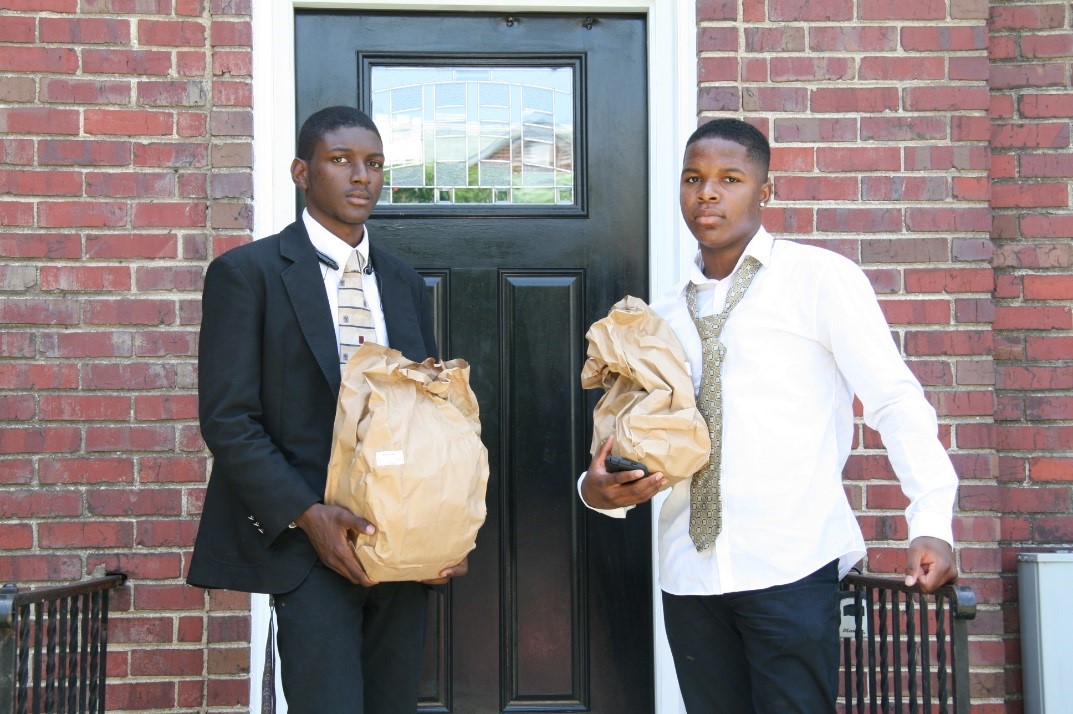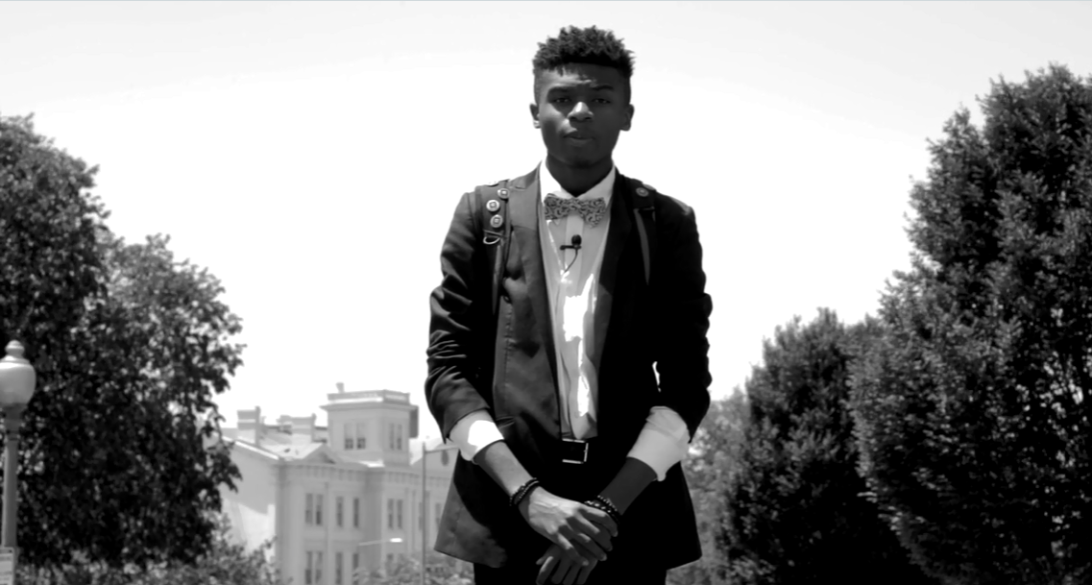Promise Program Seeks a New Path for Violence Prevention
Nonviolence is for the strong,” says a Washington, D.C., high school student in a video, quoting Mahatma Gandhi. “Violence is not only impractical, but immoral,” says another, quoting Dr. Martin Luther King, Jr.
The young men are from the pilot class of the Promise Program, an NIMHD-funded project aimed at reducing violence in the African American community. They speak in a video they produced at the end of the 9-month program.
Much of the research on violence prevention to date has focused on risk factors such as poverty or prior exposure to violence. The Promise Program is taking a different approach: studying whether strengthening protective factors, such as community ties and sense of purpose, can prevent violence in African American young men. Leonard Upson, program coordinator at Howard University, explains, “If the young men are grounded in these protective factors, it will help reduce their inclinations to being violent or acting out. That’s why we call this the Promise Program. These aren’t students at risk, they’re students at promise.”

The program, now in its second year, is part of the Minority Men’s Health Initiative (MMHI). The MMHI is studying health problems that disproportionately affect minority men, including diseases such as diabetes and cancer—and violence, which has only recently been recognized as a health disparity comparable to diabetes. Although African Americans make up only 13 percent of the U.S. population, they make up half of homicide victims. Offending rates for murder are also higher for African Americans, as homicide victims are more likely to be killed by someone of their own race or ethnicity. Research on how to close this gap has lagged behind that on other public health problems.
The Promise Program enrolls 120 participants each year, split evenly between the Howard University site in Washington, D.C. and the central site at Hampton University in Hampton, Virginia. The overall violence prevention program is under the direction of Dr. Linda Malone-Colón, dean of the School of Liberal Arts at Hampton University. At both sites, the program is divided between 30 students, ages 12 to 18, and 30 young adults, ages 18 to 25. At the Howard University site, the students include both low and high academic achievers, and troubled youth, while the older group includes men working toward their GED, some of whom have served time in prison.

Participants attend weekly workshops where they act out real-life scenarios and discuss issues such as black manhood, spirituality, and fatherhood. Upson explains that while many of the men are young fathers, many do not have relationships with their own fathers.
That absence is where mentoring comes in: The participants discuss their own lives with mentors, who range from Howard University students to more senior members of the community. Crystal Cotten Faison, project director at Howard University, says the mentoring “gives [participants] a platform to express themselves more freely with like-minded young men and gentlemen.”

At the end of the program, the participants work together on cooperative projects. “It’s their voice, their thoughts and understanding on how they can reduce violence in their community,” Faison says. In 2015, participants created two different public service announcements. The high school students created a video calling for nonviolence, while the older group addressed perceptions of black men as violent criminals. “I’m really excited and impressed with what they did,” Faison says.
The Promise Program’s mission includes carrying out research on whether the program works. That analysis is not complete yet, but results from the first year are encouraging, says Dr. A. Wade Boykin, professor of psychology and principal investigator of the Promise Program at Howard University.
Participants filled out questionnaires before and after the program. At the end of the pilot year, the young men reported higher levels of social support, better ability to regulate their emotions, more optimism about the future, and a more positive racial identity. The program helped them “reimagine how they view their life, their life space, their possibilities, and their future,” Boykin says, and many participants came back to help recruit the next class. Boykin says it is particularly encouraging that evaluators saw similar signs of success in two age groups and in two different states.

Faison says she noticed a change in the young men’s daily lives as the program went on. The middle and high school students had fewer suspensions, were less disruptive in school, and showed more ownership of their behaviors. “That gives us the feeling that they are making really great progress with the program,” she says. “We’re hoping that this is the kind of program that can be replicated in cities across America.”
For more information, visit the Minority Men’s Health Initiative.
References
- Harrell, E. (2007). Black victims of violent crime. U.S. Department of Justice, Bureau of Justice Statistics Special Report, NCJ 214258. Retrieved from https://www.bjs.gov/content/pub/pdf/bvvc.pdf
- Cooper, A., & Smith, E. L. (2011). Homicide trends in the United States, 1980–2008. Patterns & Trends, U.S. Department of Justice, Bureau of Justice Statistics, NCJ 236018. Retrieved from https://www.bjs.gov/content/pub/pdf/htus8008.pdf

















